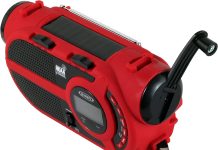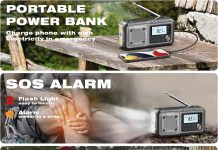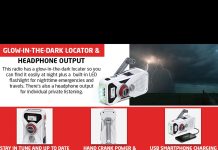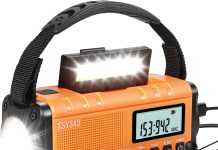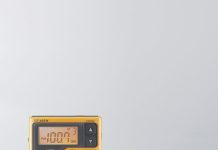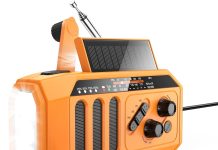Maintaining our radios is essential to ensure they continue to provide us with clear and uninterrupted communication. While often overlooked, there are indeed some maintenance tasks that should be performed regularly on our radios. These tasks include cleaning the exterior and interior components, checking the battery and power source, inspecting the antenna, and updating the software. By dedicating a little bit of time to these upkeep tasks, we can enhance the performance and longevity of our radios, ensuring they are always ready to connect us with the world around us.
Review contents
Cleaning
Dusting
Regular dusting is an important part of maintaining our radios. Dust can accumulate on the surface of the radio, which not only ruins its aesthetic appeal but can also interfere with its functionality. To dust our radios, we can use a soft cloth or a microfiber cloth. Gently wipe the surface of the radio to remove any dust particles. Avoid using abrasive materials or harsh chemicals, as they may damage the radio’s exterior.
Cleaning the exterior
In addition to dusting, it is also essential to clean the exterior of our radios periodically. We can use a mild cleaning solution or a mixture of water and soap to clean the surface. Dip a soft cloth in the cleaning solution, wring it out to remove any excess moisture, and gently wipe the surface of the radio. Be careful not to let any liquid seep into the internal components of the radio.
Cleaning the knobs and buttons
The knobs and buttons on our radios can also accumulate dirt and grime over time. To clean them, use a soft cloth or a cotton swab slightly dampened with a mild cleaning solution. Gently wipe or swab the knobs and buttons, ensuring that no moisture drips into the radio. This maintenance task not only keeps our radio looking clean but also ensures smooth operation of the controls.
Cleaning the antenna
The antenna of our radio can collect dust, debris, and even oxidation, which can affect its performance. To clean the antenna, use a soft cloth or a duster to gently wipe away any dirt or dust. If there is oxidation on the antenna, make a mixture of water and vinegar, dip a cloth in it, and carefully rub the affected areas. Avoid using excessive force, as it may damage or bend the antenna. Properly cleaning and maintaining the antenna will help ensure clear reception and optimal performance of our radio.
Inspecting and Replacing Batteries
Checking battery contacts
Regularly inspecting the battery contacts is crucial to ensure a strong and reliable power connection in our radios. Over time, battery contacts may accumulate dirt, corrosion, or become loose, impeding the proper flow of electricity. To inspect the battery contacts, remove the batteries and examine the contacts for any signs of dirt or corrosion. If necessary, gently clean the contacts using a soft cloth or a cotton swab dipped in rubbing alcohol. Additionally, check for any loose connections and ensure that the battery contacts are making proper contact with the batteries.
Replacing batteries
Batteries are the lifeline of our radios, and it is essential to replace them when they are no longer functioning optimally. If we notice that our radio is experiencing decreased battery life or irregular performance, it may be a sign that the batteries need replacing. Follow the manufacturer’s instructions for the correct battery type and installation method. Remember to dispose of the old batteries responsibly according to local regulations.
Ensuring Proper Ventilation
Keeping vents clear
Proper ventilation is crucial for preventing overheating and ensuring the longevity of our radios. It is essential to keep the vents clear of any obstructions, such as dust, debris, or objects placed too closely. Regularly inspect the vents and use a soft brush or a can of compressed air to gently remove any accumulated dust or debris. By keeping the vents clear, we allow for proper airflow, preventing potential overheating issues.
Checking for overheating
Overheating can be detrimental to the performance and lifespan of our radios. To ensure our radios are not overheating, regularly check the temperature of the device during use. If the radio feels excessively hot to the touch or if it shuts down unexpectedly, it may be a sign of overheating. In such cases, turn off the radio and allow it to cool down before further use. If the problem persists, consult the manufacturer or a professional technician for assistance.
Checking Antenna Connections
Inspecting antenna cable
The antenna cable plays a crucial role in providing a clear signal to our radios. Regularly inspect the condition of the antenna cable for any signs of damage, such as frayed or worn-out sections. If we notice any problems, it is important to replace the antenna cable promptly to avoid signal degradation or loss. Ensure that the replacement cable is compatible with our radio model and carefully follow the manufacturer’s instructions for installation.
Cleaning antenna connections
Over time, antenna connections can accumulate dirt, rust, or become loose, which can weaken the signal quality of our radios. To maintain a strong connection, it is important to clean the antenna connections regularly. Use a soft cloth or a brush to gently remove any dirt or debris from the antenna connections. If there is rust or corrosion present, use a mixture of water and vinegar to clean the connections. Remember to dry the connections thoroughly before reconnecting the antenna.
Calibrating and Tuning
Calibrating the dial
Proper calibration of the radio dial ensures accurate frequency tuning and optimal performance. To calibrate the dial, consult the radio’s user manual for specific instructions as the calibration methods may vary between models. Typically, the process involves adjusting a small screw near the dial with a small screwdriver. It is important to follow the manufacturer’s instructions carefully while calibrating the dial to avoid any potential damage to the radio.
Tuning accuracy
To enjoy the best reception and audio quality, it is important to tune our radios accurately. Digital radios usually have an automatic tuning feature, which simplifies the process. For analog radios, we can manually tune the dial to the desired frequency. Fine-tuning may be required to eliminate static or improve reception in certain areas. Experiment with different orientations of the radio or the antenna to achieve the best tuning accuracy.
Preventing Dust and Moisture
Using a dust cover
A dust cover is a simple yet effective way to protect our radios from dust and debris when not in use. Dust covers come in various sizes and materials, so it is crucial to choose one that fits our radio well. Whenever we are not using our radio for an extended period, simply cover it with the dust cover. This helps prevent dust from settling on the surface and potentially causing damage to the internal components.
Avoiding moisture exposure
Moisture can wreak havoc on electronic devices, including our radios. To avoid moisture damage, it is important to keep our radios away from environments with high humidity or direct exposure to water. If we plan to use our radio outdoors, consider purchasing a weatherproof or water-resistant model. Additionally, in case of accidental exposure, immediately power off the radio, remove the batteries, and allow it to dry completely before using it again.
Inspecting and Repairing Wires and Cables
Checking for frayed wires
Regularly inspecting wires and cables is essential to ensure uninterrupted connectivity and prevent potential hazards. Look for any visible signs of fraying, wear, or damage on the wires and cables connected to our radio. If we notice any issues, it is important to repair or replace them promptly. Using damaged wires or cables can affect the radio’s performance and may pose a safety risk.
Repairing or replacing damaged cables
If we detect any frayed or damaged cables, it is crucial to repair or replace them as soon as possible. Depending on the extent of the damage, we can either repair the cables ourselves using electrical tape or seek professional assistance for more complex repairs. It is important not to ignore damaged cables, as they can affect the overall functionality and safety of our radio.
Updating Firmware
Checking for firmware updates
Manufacturers often release firmware updates to improve the performance and add new features to our radios. Periodically checking for firmware updates is essential to stay up-to-date with the latest enhancements. Visit the manufacturer’s website or consult the user manual to find out how to check for firmware updates specifically for our radio model.
Updating the radio’s firmware
Once we have identified a firmware update, it is important to follow the manufacturer’s instructions carefully to update our radio’s firmware. Typically, this involves connecting the radio to a computer via USB or using a dedicated software tool provided by the manufacturer. Follow the step-by-step instructions provided to ensure a successful firmware update. Updating the firmware can enhance the radio’s performance, fix bugs, and provide new features.
Performing Signal Checks
Checking signal strength
To ensure optimal reception and audio quality, periodically check the signal strength of our radio. Signal strength can vary depending on factors such as location, interference, and weather conditions. If the signal strength is weak, try repositioning the radio or the antenna. If the problem persists, consider using an external antenna or contacting a professional for guidance.
Performing antenna alignment
Correct antenna alignment is crucial for receiving clear signals. If we notice any degradation in signal quality, we should consider aligning the antenna properly. Consult the radio’s user manual or contact the manufacturer for specific instructions on how to align the antenna correctly. Incorrect antenna alignment can result in poor reception and potential signal loss.
Store Properly when Not in Use
Choosing a suitable storage location
When we are not actively using our radio, it is important to store it properly to protect it from potential damage. Choose a suitable storage location away from extreme temperatures, moisture, direct sunlight, or areas prone to humidity. Additionally, avoid storing the radio near other electronic devices that generate excessive heat. A cool, dry, and dust-free environment is ideal for storing our radios safely.
Protecting the radio during storage
To provide extra protection during storage, consider using a padded case or wrapping the radio in a soft cloth or bubble wrap. This helps prevent accidental scratches, impacts, or dust accumulation. If our radio has a removable antenna, it is a good practice to remove it before storing to prevent any potential damage. Properly storing our radios when not in use ensures their longevity and allows for hassle-free usage in the future.
Performing regular maintenance tasks on our radios helps ensure their optimal performance, longevity, and enjoyable user experience. By following the outlined steps for cleaning, inspecting and replacing batteries, ensuring proper ventilation, checking antenna connections, calibrating and tuning, preventing dust and moisture, inspecting and repairing wires and cables, updating firmware, performing signal checks, and storing properly when not in use, we can take care of our radios and enjoy uninterrupted entertainment, communication, or emergency access for years to come.


